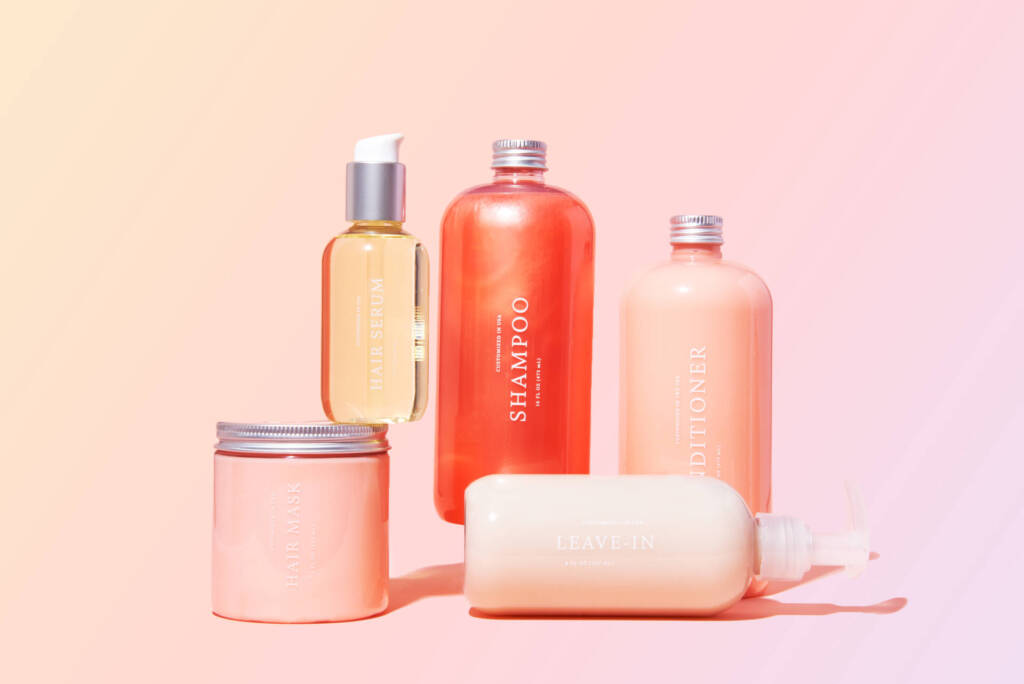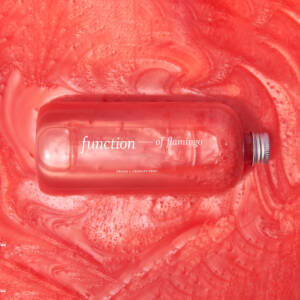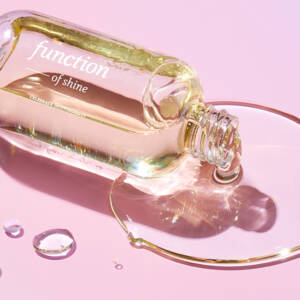Where can I find a moisturizing yet sulfate-free shampoo? How do I cut down on fairy knots? Most importantly, to use silicones or not to use them?
For those with type 3c hair, these questions are just the tip of the iceberg. We’ll address them below, along with what this curl type is all about. With all the info you will ever need at your fingertips, the ideal haircare routine for 3c hair is just within reach.
3c Hair: What It’s All About
At this point, you’ve probably heard about the hair typing system at least once. But just in case you haven’t, here’s a little refresher on the subject:
- Type 1 hair (straight hair) includes: Type 1a hair, type 1b hair, type 1c hair
- Type 2 hair (wavy hair) includes: Type 2a hair, type 2b hair, type 2c hair
- Type 3 hair (curly hair) includes: Type 3a hair, type 3b hair, type 3c hair
- Type 4 hair (coily or kinky hair) includes: Type 4a hair, type 4b hair, type 4c hair
Type 3c hair follicles are oval in shape, giving rise to their signature twists and turns. Just like 3b hair, 3c curls manifest as ringlets, albeit with a tighter curl pattern (think the diameter of a straw or pencil). It’s why you have major volume compared to straight and wavy hair types. In terms of hair texture, your fibers typically range from fine to medium.
Among the curly hair types, 3c hair is the most voluminous and springy. We admit it’s oddly satisfying to gently pull a corkscrew down and watch it bounce back to its original length — boing! Your mane is also home to a few 3b-ish curls and 4a-esque tight coils, giving it an interesting texture.
The Challenges of 3c Hair
Due to the more extreme curves and bends in 3c hair, this curl type experiences the most shrinkage. Natural oils (sebum) also find it difficult to traverse the twisting trajectory of your hair shafts. That’s why 3c hair is the most vulnerable to dryness and frizz amongst the curly hair types.
Aside from these common issues, this natural hair type has a bad case of fairy knots (aka, single strand knots). Because your curls coil around themselves, it’s scarily easy for your strands to form knots along the hair shafts.
Scientists term this phenomenon trichonodosis. The International Journal of Trichology explains that the recoiling of the hair shaft (characteristic of curly and coily hair types) “may lead to an entanglement which, by chance, forms a knot.”
The journal also cites “scratching, combing, washing or friction” as common causes of fairy knots. In which case, you now have a good explanation for why these knots seem to double after showering and sleeping (cue the friction against your towel and pillowcase). What’s more, pulling on these knots invariably splinters the hair shafts, causing irreversible breakage.
How to Care For Type 3c Hair
After identifying the common challenges of your curl type, it’s time to eliminate them from your life. You may have heard of the Curly Girl Method* (CGM), which we (like the rest of the curly hair community) heartily vouch for. To set your haircare routine up for success, though, choose products that match your hair porosity.
For the uninitiated, hair porosity basically refers to how well your mane absorbs and retains moisture. Low porosity hair doesn’t absorb moisture all that well, which is why rich, moisturizing products will only sit on its cuticles and weigh your mane down. Instead, go for lightweight, hydrating ingredients like aloe vera. On the other hand, high porosity hair absorbs moisture speedily but loses it equally fast. To maximize moisture retention, you will want haircare products that come with a rich texture, such as creams and mousses.
Once you understand hair porosity, you can implement other tips to care for your type 3c hair. Keep in mind that the haircare tips listed below are built on top of those already covered in our guides to 3a hair and 3b hair. It’s time for some serious note-taking!
Moisturize, Moisturize, Moisturize!
At the root of all evil (read: frizz, fairy knots, breakage, and shrinkage) is a lack of moisture that 3c curls know only too well. That’s why your haircare routine should comprise the following moisturizing essentials:
- Sulfate-free shampoo and conditioner: Natural hair types know that sulfates are a major no-no. Steer clear of them, particularly in your shampoos, where these ingredients are often present. (Just so you know, Function of Beauty’s haircare products are always sulfate-free.)
- Co-wash: Curly-haired gals are no stranger to the beauty of co-washing. Unlike a regular conditioner, a co-wash is specifically designed to remove surface buildup while conditioning for the one-two punch of cleansing and hydrating. (Check out our newest launch — the custom co-wash!)
- Deep conditioner: Because 3c hair is the driest, frizziest, and most breakage-prone among curly hair types, your locks can’t live without a deep conditioner. It’s formulated with higher levels of conditioning agents to moisturize your mane from the inside out. Bonus: deep conditioning tends to make detangling a breeze. (Our custom hair mask acts as a tall drink of water for thirsty strands.)
- Leave-in conditioner: The only way to keep a handle on the frizz and fairy knots is a leave-in. It hydrates your hair post-shower and on non-wash days. This lightweight curl cream also helps your hair look smooth and shiny for healthier-looking tresses. (Our customized leave-in treatment will help take your mane to the next level.)
- Hair mist: Whether you need to refresh your curls on non-wash days or after a few hours of humid weather, a hair mist is a quick and easy way to do so. Plus, the light-as-air spritz is ideal for fine strands and low porosity hair without overloading your ringlets. (Our hair mist doubles as a chic hair fragrance.)
- Oils and creams: Hair oils and creams are essential to the LOC (leave-in, oil, and cream) method for sealing moisture in. If you have highly porous hair, pick ultra-rich moisturizers like coconut oil and shea butter. If your hair is low in porosity, lightweight hydrators like jojoba oil are less likely to flatten your ‘do. (If you find oils and creams too rich for your fibers, try our lightweight hair serum.)
Aside from moisturizing haircare products, there are some lifestyle changes you can make to maintain your curls’ hydration levels. For example, cotton is an ultra-absorbent material that wicks away the natural oils on your strands. Its relatively rough texture also produces more friction that easily leads to frizz and tangles. Switch to satin pillowcases and microfiber towels to cut down on moisture loss, flyaways, and fairy knots.
P.S. Use our in-depth guide on how to moisturize hair.
Give Silicones a Try
Silicones are a class of synthetics that can benefit curly hair in various ways. According to scientific literature, silicones may potentially:
- Downplay frizz
- Smoothen the hair cuticles
- Enhance shine
- Prevent heat damage
- Add volume
- Improve color retention (for color-treated hair)
These synthetics also form a protective film on the hair shafts to keep moisture in, which is a particular boon for highly porous, dry hair. In other words, silicone-based haircare and styling products may be your secret weapons to healthier-looking hair.
But if you still think silicones aren’t for your tight curls, that’s OK too. The most important thing is to do what’s best for your locks. At Function of Beauty, we’re here to help you do just that. It’s why we’ve provided silicone-free options for our shampoo and conditioner. (Just check off the “silicone-free formula” box when you take our hair quiz.)
Make Your 3c Hair Type Work for You
Understanding the ins and outs of 3c curls is crucial for making this type of hair work for you. Remember to keep your hair porosity in mind as it plays a key role in determining the right hair products for your mane.
In essence, this curl pattern requires hydration by the boatload. Mix and match your hair products based on how your tresses look and feel that day. Also, think about whether silicones are a good fit in your routine. The bottom line is that there is no right or wrong answer when caring for your hair because everyone’s strands are unique.
*Disclaimer: Function of Beauty is not associated with Lorraine Massey, the Curly Girl Method (“CGM”), or Curly Girl: The Handbook. Reference to the Curly Girl Method is provided for informational purposes only and is accurate to the best of our knowledge, however it is not guaranteed. Product formulas can change at any time.





